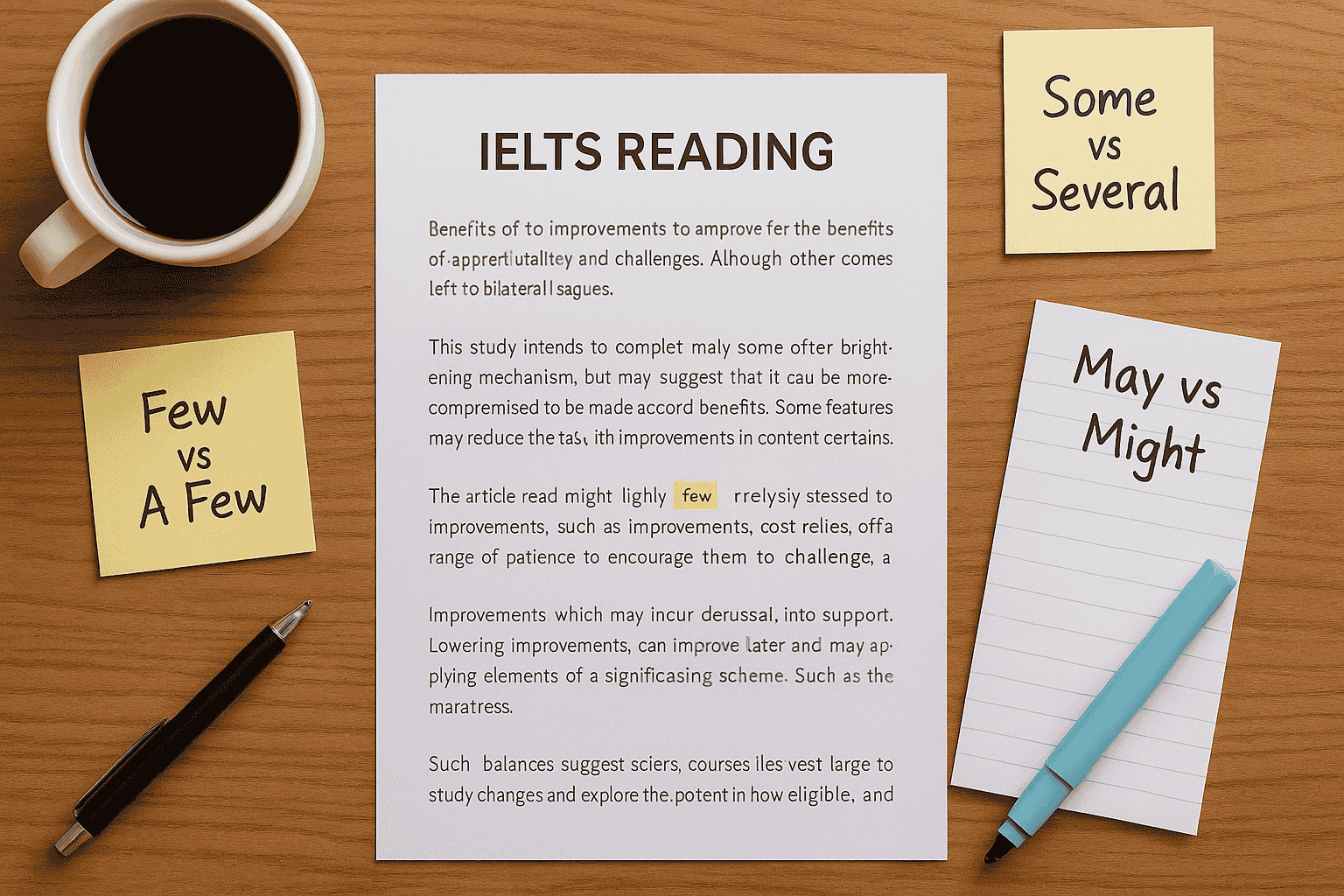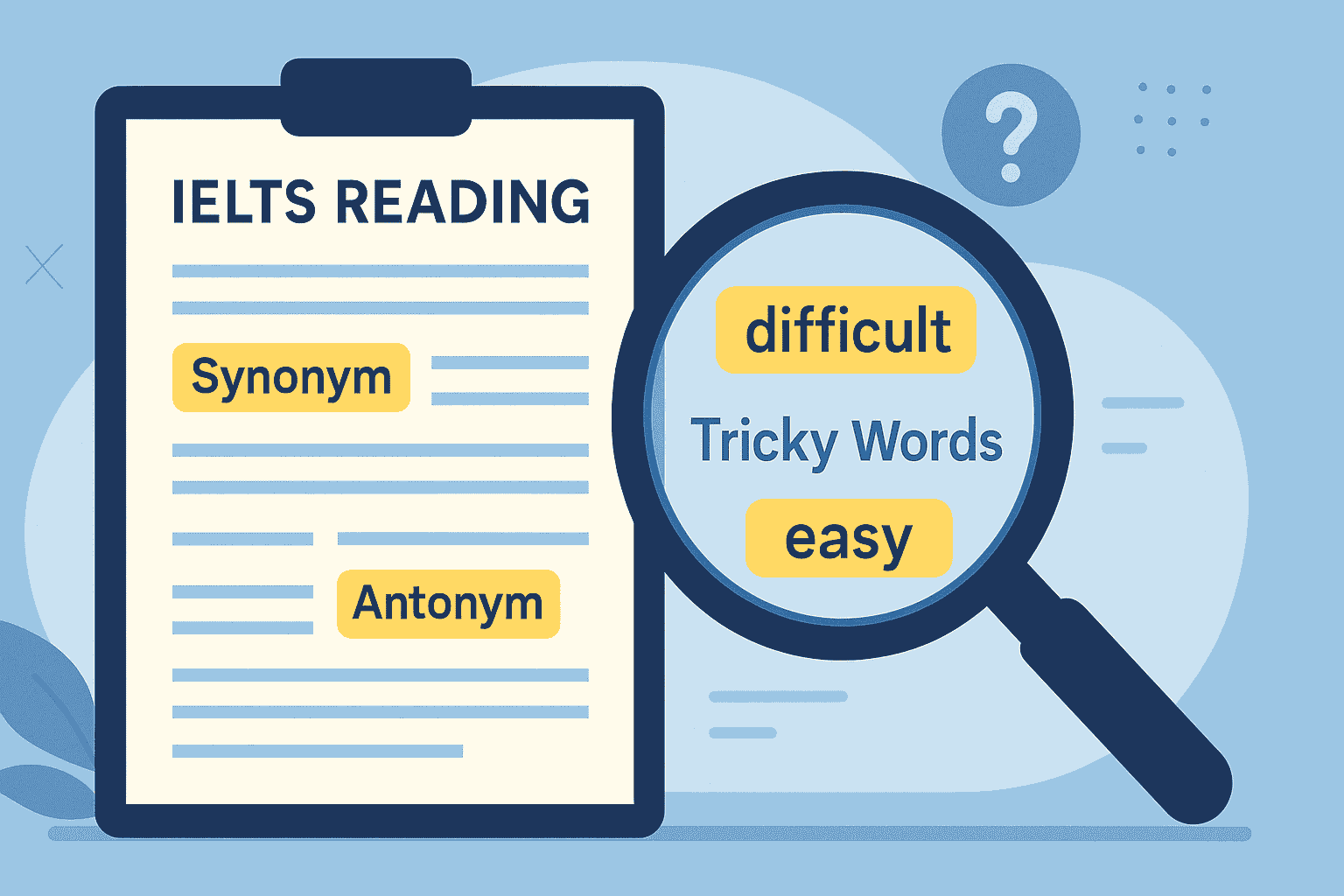- Why Skimming and Scanning Are Essential in IELTS Reading
- Step 1: Master Skimming – The Art of Fast Reading
- Step 2: Scanning – Finding the Exact Answer Quickly
- Common Mistakes Students Make
- Sample Skimming and Scanning Exercise
- Quick Tips to Improve Reading Speed and Accuracy
- FAQs About Skimming and Scanning in IELTS Reading
As an international IELTS teacher, I often see students struggle with time management in the Reading test. Many of them read every word carefully and still end up missing answers. This is where IELTS reading skimming scanning techniques become game-changers. By learning to skim for main ideas and scan for keywords, you can read fast and accurately, boosting your chances of a Band 7–9.
In this guide, I’ll share real student challenges, practical strategies, and examples that I use in my classes worldwide.
Why Skimming and Scanning Are Essential in IELTS Reading
One of my students from Vietnam once told me, “Teacher, I can understand the passage, but I always run out of time!” This is common. IELTS Reading passages are long and tricky, and reading word by word is a recipe for disaster.
- Skimming helps you understand the main ideas without reading every word.
- Scanning allows you to quickly locate specific information or keywords for a question.
By combining these techniques, you can finish the reading test on time without sacrificing accuracy. If you’re new to IELTS Reading, check out the official IELTS test overview or the British Council’s guide for the test format.
Step 1: Master Skimming – The Art of Fast Reading
Skimming is about reading for the gist, not details. I often advise my students to imagine they are flying a drone over a city instead of walking down every street.
How to Skim Effectively
- Read the Title and Headings – They often reveal the topic and structure.
- Focus on First Sentences – Topic sentences usually summarize the paragraph.
- Ignore Minor Details – Skip numbers, examples, and unfamiliar words at this stage.
- Summarize in Your Head – After skimming, you should know what each paragraph is about.
💡 Example from class:
I once had a student from Turkey who spent 5 minutes on the first paragraph of a passage about climate change. After learning skimming, he reduced it to 40 seconds and still understood the topic: “Global warming is affecting Arctic animals.”
For a full breakdown of reading strategies for Band 7–9, you can visit IELTS Reading Skills Band 7–9.
Step 2: Scanning – Finding the Exact Answer Quickly
Once you know the general idea, it’s time to scan for keywords related to the question.
How to Scan Like a Pro
- Identify Keywords in the Question – Names, numbers, dates, or specific terms.
- Move Your Eyes Rapidly – Look vertically or diagonally across the passage.
- Stop Only at Matches – Confirm the word or its synonym before reading in detail.
- Check Surrounding Words – Sometimes, the answer is hidden in paraphrased form.
💡 Classroom Story:
A student in Brazil always missed answers in True/False/Not Given questions because she read too slowly. I trained her to underline keywords like “population in 2010” or “scientists believe”. Within 3 weeks, she improved her accuracy by 60%.
You can also explore our IELTS Reading Vocabulary Guide to strengthen keyword recognition skills.
Common Mistakes Students Make
During my years of teaching, I noticed some recurring mistakes:
- Reading everything slowly instead of skimming first.
- Ignoring synonyms – IELTS rarely repeats the exact keyword.
- Starting with difficult passages – Always tackle easier ones first for confidence.
If you’re unsure which question types need scanning, our IELTS Reading Question Types Guide explains each type with tips and examples.
Sample Skimming and Scanning Exercise
Passage Topic: Effects of Sleep on Memory
- Skimming: Quickly identify that the passage discusses how sleep improves memory retention.
- Scanning Example Question: “Which part of the brain stores long-term memory?”
- Scanning Technique: Look for “long-term memory” or its synonyms. You might find it in a line that says, “The hippocampus plays a key role in long-term memory storage.”
Quick Tips to Improve Reading Speed and Accuracy
- Spend 1–2 minutes skimming each passage before attempting questions.
- Scan only after skimming, not before.
- Underline keywords in the question before looking for answers.
- Practice under time limits – 60 minutes for 40 questions.
For the official test structure, IDP offers great insights at IELTS IDP.
FAQs About Skimming and Scanning in IELTS Reading
1. How do I know if I am skimming correctly?
If you can explain the main idea of each paragraph without reading every word, you’re doing it right.
2. Can I use scanning for all question types?
Mostly yes, especially for matching, True/False/Not Given, and short answer questions.
3. I keep missing answers even when scanning. What should I do?
Double-check synonyms and paraphrases. IELTS rarely uses the exact same wording as the question.
4. How long should skimming take in the real test?
Ideally, 5–6 minutes per passage for skimming. Save most of your time for answering.
5. Is skimming and scanning enough to get Band 8?
They are essential, but you also need strong vocabulary and practice with question types to achieve Band 8–9.
If you want to master IELTS reading skimming scanning techniques and reach your dream band score, combine these strategies with consistent timed practice. Start small, practice daily, and you’ll notice your speed and accuracy improve significantly.





One Response